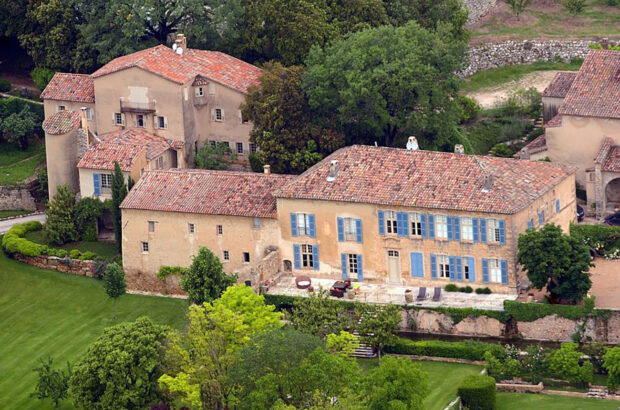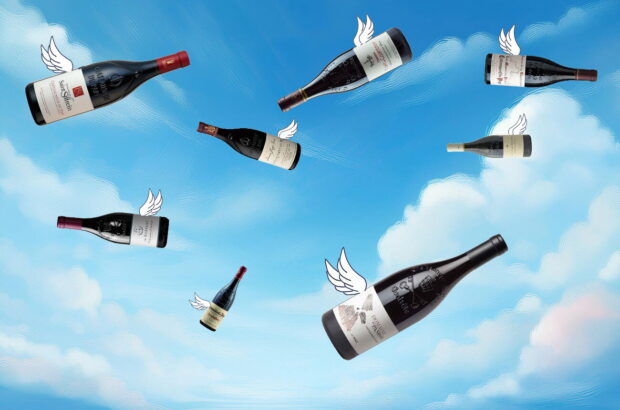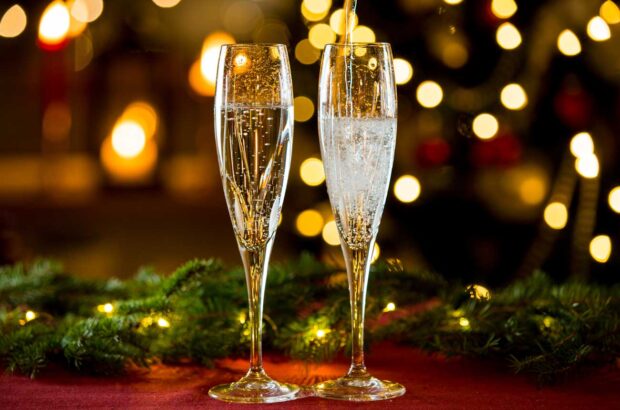James Lawther MW & Steven Spurrier take a look at some key themes of the 2009 vintage in Bordeaux...
Tannins
James Lawther MW
The quantity of tannins in 2009 (IPT stands for Indice des Polyphénols Totaux or Total Phenolics) is a clear indication that the wines have structure and the potential to age.
Some, like Cos d’Estournel with a massive IPT of 99, could be in the mould of, say, a Mouton-Rothschild 1986 and take years to come round (it’s only just beginning to open a little now).
Producers on the right bank are less profligate with IPT readings than their left bank counterparts, but you can be assured that the wines have a high tannin count as well.
In terms of taste and texture, commentators at the en primeur tastings generally found the wines more voluptuous and less vigorously tannic than in 2005, but this is due to the ripeness of the tannins, the generosity of fruit and degree of alcohol.
This is a rich, ripe vintage with long ageing potential which, at present, also offers the sort of exuberant opulence and accessibility seen in 1982.
Steven Spurrier
Tannins are what preserves a red wine. Alcohol and acidity do not change with age, but fruit does change a great deal, emerging as the wine matures, spending many years on a plateau and then fading and finally drying out.
Tannins mature very slowly and never fade away, so the optimum time to drink a red wine, particularly a red Bordeaux from a tannic vintage, is when the fruit begins to dominate the tannins, say in three years for a minor Cru Bourgeois from the Medoc, until the tannins begin to once more dominate the fruit as the fruit fades, say in eight years for the Cru Bourgeois (or fifty for Latour).
Tannins provide backbone and grip, and when they are ripe as they are in 2009, they do not unbalance the wine. In the past, many Bordeaux chateaux picked too early and the tannins were simply not ripe. This meant that these wines had to be kept a long time for the tannins to soften, often too long for the fruit to last. Such vintages were 1984 and 1994, where the fruit was not ripe enough for the tannins. This just was not the case in 2009.
Alcohol
James Lawther MW
Let’s not beat about the bush, alcohol levels are high in 2009 and an important feature of the vintage.
There’s an extra half a degree compared to previous years, according to Alain Reynaud, owner of Château La Croix de Gay in Pomerol and president of Le Cercle Rive Droite, an association of Right Bank producers.
And when you hear that Cos d’Estournel is 14.5%, Haut-Brion 14.3%, and Latour 13.7%, you know it’s not just a right bank phenomenon.
The alcohol degrees are natural without the legal artifice of chaptalisation. Optimal weather conditions including a warm (but not scorching), dry, sunny summer (July and August were drier than in 2005) and a clement autumn were responsible for high sugar levels, aided and abetted by good vineyard management.
The harvest was not particularly late, but the Cabernet was still harvested at 13-14% potential and the Merlot at 14% and more.
A good percentage appear surprisingly balanced, the alcohol not overly conspicuous. This balance comes from normal to good acidity levels (unlike 2003) and an important, possibly unprecedented, quantity of ripe tannins. There’s also an extraordinary freshness to the fruit, which some growers put down to cool night time temperatures before and during the harvest.
In terms of winemaking, savvy producers realised it was not going to be expedient to over extract and were gentle with fermentation temperatures and pumping over. Where this was not the case the alcohol tends to be more present, as it does with overripe grapes or those picked with high sugars but not the requisite phenolic ripeness. The latter tends to be the case for some of the right bank Merlot.
In general the right bank wines with their dominance of Merlot do exude more power. There’s also a perception of sweetness to the fruit which is heightened by the level of alcohol. The more linear, Cabernet dominant wines of the left bank generally display a touch more freshness.
Steven Spurrier
Alcohol is only a problem if it dominates the wine. Cos d’Estournel at 14.5% and Haut-Brion at 14.3% are certainly high alcohol wines in the history of Bordeaux, but both are balanced by high tannins and a refreshing acidity.
Twenty years ago, Bordeaux had to chaptalise almost every vintage. In the present decade, chaptalisation has been rarely needed and the sugar merchants would have found few, if any, clients in 2009. Thus, the alcohol is natural and with the highest levels of tannins ever recorded in Bordeaux, a high level of alcohol was necessary to surround them. Even with high alcohols, there were very few wines in 2009 that came out over 14%, whereas the Merlots and Cabernets of the new world rarely come out under 14%.
Ripeness
James Lawther MW
The first thing to affirm is that 2009 is naturally a ripe, generous year. Over-ripeness is a problem as it makes the wines unbalanced, emphasising the alcohol and giving dryness to the tannins.
It has occurred more on the right bank than the left in 2009, but less than in the past and less than has been murmured given the conditions of the year. The reason given is that producers delayed the harvest too long, which could well be the case. However, beware the theories concerning the correct time to pick, as much depends on terroir and the state of each individual vineyard.
In Pomerol, Lafleur was picked before the 19/20 September rain but Pétrus afterwards, at the beginning of October. Valandraud in St-Emilion, coming from a later ripening zone, was picked 15-20 October but is still balanced and harmonious with 14% and a pH of 3.5.
Steven Spurrier
If over-ripeness was a problem in 2009, it was reserved principally for the producers in St-Emilion and Pomerol and surrounding communes in the Libournais, who waited too long to pick, thus harvesting grapes that were very high in alcohol and low in acidity, or those who submitted their grapes to over-extraction, thus over-concentrating the fruit that was naturally concentrated to start with.
High alcohols were what nature provided and they were needed to cover the very high tannins, and fortunately acidities were retained in the grapes to provide balance. 2009 just happened to be a very ripe vintage, and when Bordeaux gets it ripe, it gets it right.






